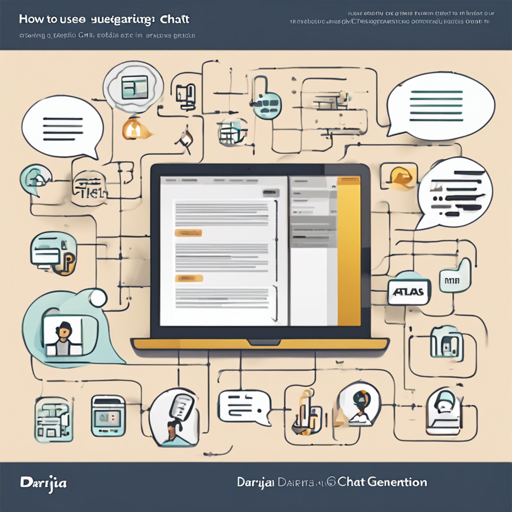Welcome to your guide on utilizing the Atlas-Chat model, specifically designed for generating text in Darija, the colloquial Arabic of Morocco. In this article, we will explore how to implement the model effectively and troubleshoot potential issues you may encounter along the way.
Model Overview
Atlas-Chat comprises two significant models:
- Atlas-Chat-2B: This is a smaller model with 2 billion parameters, ideal for efficient generation in resource-constrained environments.
- Atlas-Chat-9B: A more extensive version with 9 billion parameters, offering richer contextual language generation.
Both versions excel in various applications such as conversational agents, summarization, and translation, allowing Darija speakers to access advanced AI for cultural research and other needs.
Installation Steps
To get started with Atlas-Chat, follow these simple steps:
- First, ensure you have Python installed on your system.
- Install the Transformers library using the following command:
pip install -U transformers sentencepieceRunning the Atlas-Chat Model
Depending on your environment, use one of the following implementations:
Using the Pipeline API
This example demonstrates a basic interaction using the pipeline API:
import torch
from transformers import pipeline
pipe = pipeline(
"text-generation",
model="MBZUAI-Paris/Atlas-Chat-9B",
model_kwargs={"torch_dtype": torch.bfloat16, "device": "cuda"} # Replace with "mps" for Mac
)
messages = [{
"role": "user",
"content": "شكون لي صنعك؟"
}]
outputs = pipe(messages, max_new_tokens=256, temperature=0.0)
assistant_response = outputs[0]["generated_text"][-1]["content"].strip()
print(assistant_response)This will prompt a response in Darija. The response might be something like:
صنعاتني جامعة محمد بن زايد للذكاء الاصطناعي، لي هي جامعة بحثية ديال الدراسات العليا الهدف ديالها أنها تزيد بالذكاء الاصطناعي لقدّام وتنفع بيه الإنسانية.
Multi-GPU Setup
For those with multiple GPUs, you can run the model as follows:
from transformers import AutoTokenizer, AutoModelForCausalLM
import torch
model_id = "MBZUAI-Paris/Atlas-Chat-9B"
tokenizer = AutoTokenizer.from_pretrained(model_id)
model = AutoModelForCausalLM.from_pretrained(
model_id,
device_map="auto",
torch_dtype=torch.bfloat16,
)
messages = [{
"role": "user",
"content": "شنو كيتسمى المنتخب المغربي؟"
}]
input_ids = tokenizer.apply_chat_template(messages, return_tensors="pt", return_dict=True, add_generation_prompt=True)
outputs = model.generate(**input_ids, max_new_tokens=256)
print(tokenizer.decode(outputs[0]))The output should display the name of the Moroccan national team as expected.
Analogy to Understand the Code
Think of the Atlas-Chat model as a virtual chef specializing in Moroccan cuisine. Just like a chef needs a well-stocked kitchen (your environment and libraries) along with a clear recipe (the code snippets), the Atlas-Chat model requires proper setup and input to generate delectable outputs (responses in Darija). Without the right ingredients (libraries) or instructions (commands), the final dish (response) might not meet your expectations!
Troubleshooting
If you encounter issues while using Atlas-Chat, consider the following troubleshooting steps:
- Ensure that your Python and package installations are up-to-date.
- Check your GPU settings if you’re running the model in a multi-GPU setup and ensure that CUDA is properly configured.
- Verify that your inputs conform to the expected message structure.
- If the output is not as expected, adjust the
max_new_tokensortemperatureparameters for improved variation and length.
For more insights, updates, or to collaborate on AI development projects, stay connected with fxis.ai.
Conclusion
At fxis.ai, we believe that such advancements are crucial for the future of AI, as they enable more comprehensive and effective solutions. Our team is continually exploring new methodologies to push the envelope in artificial intelligence, ensuring that our clients benefit from the latest technological innovations.

